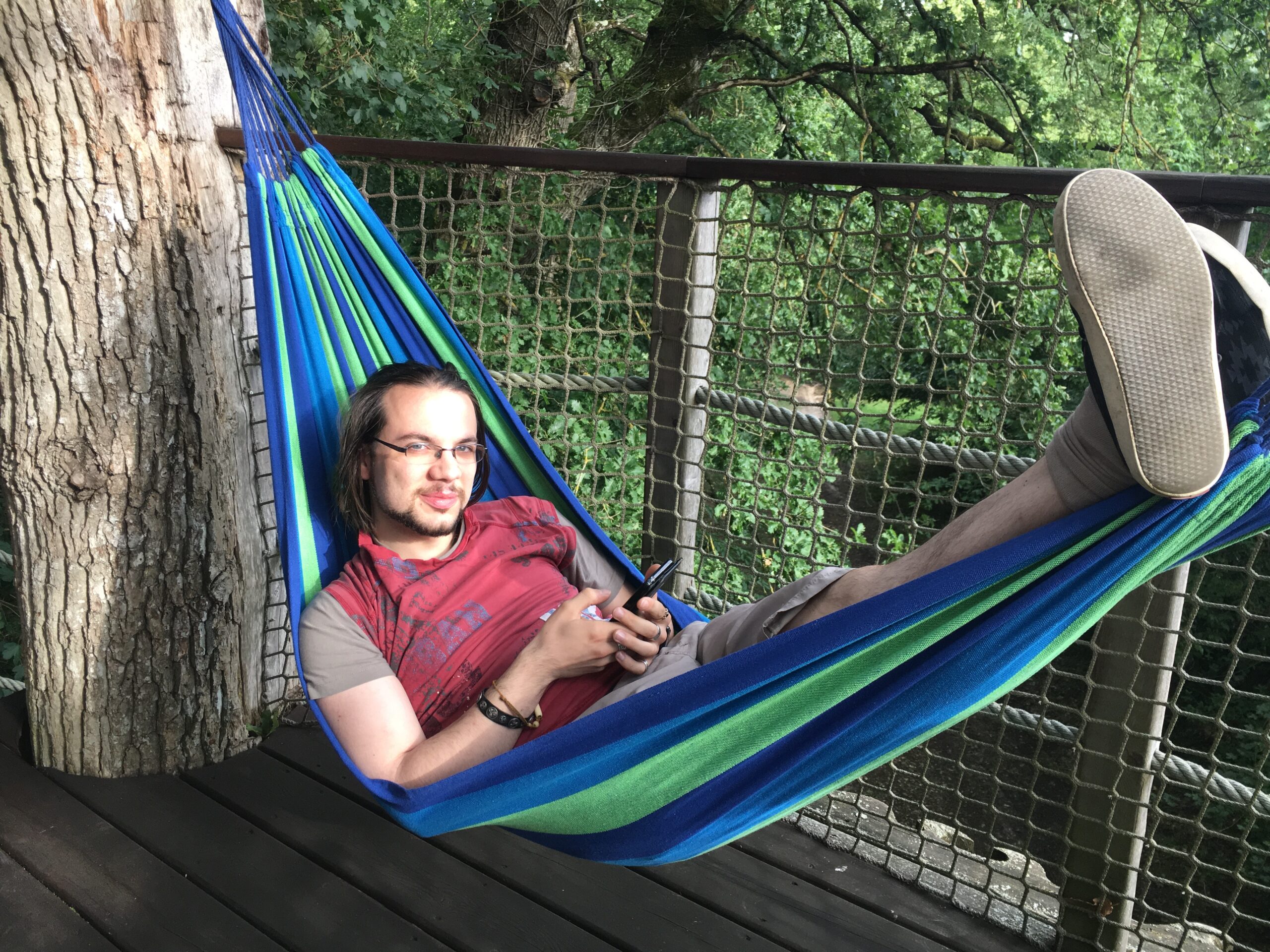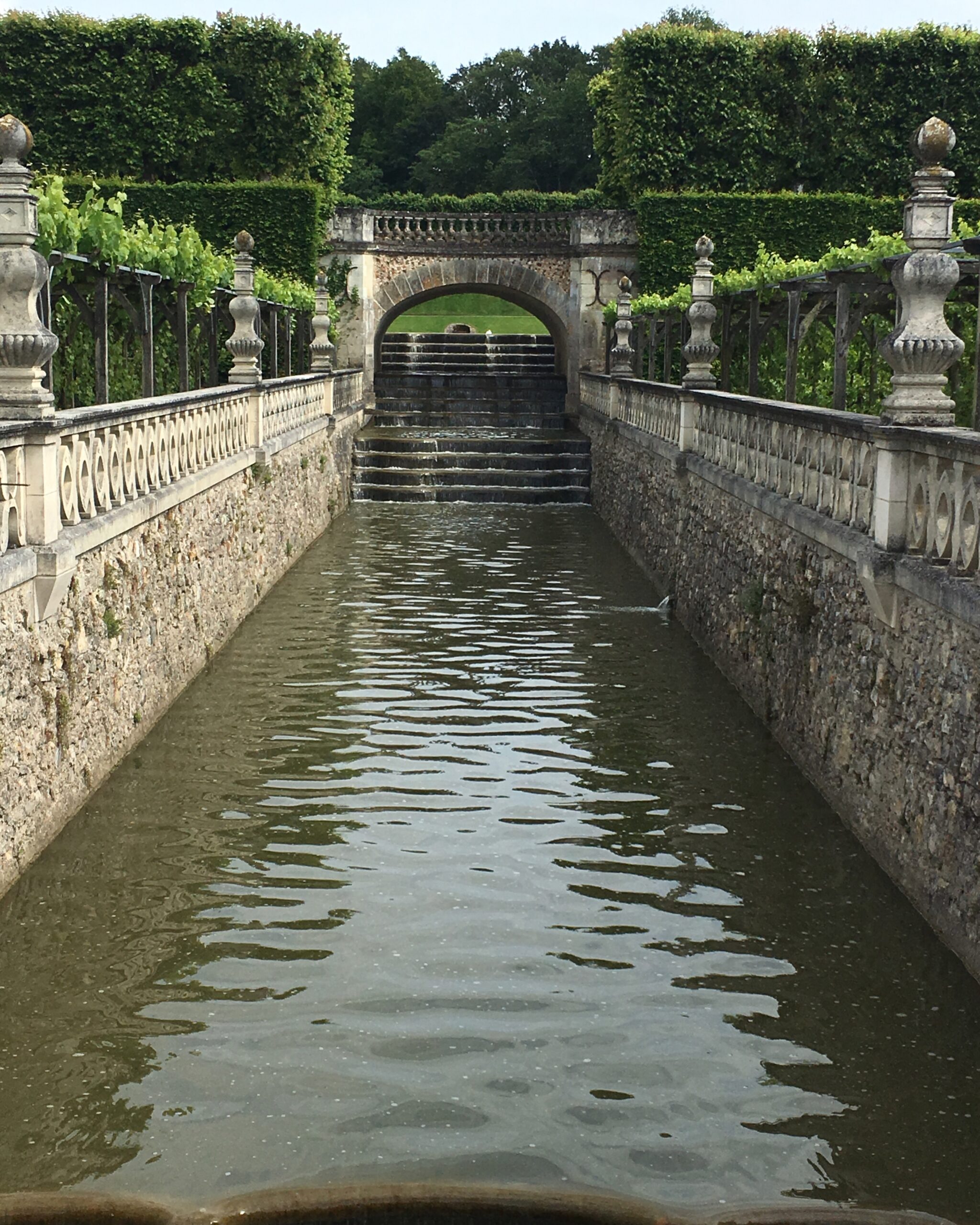This is a trip I took with my husband who decided to book us a romantic and relaxing weekend getaway. I was visiting him briefly from the UK in June of 2019 and I thought it would be apropos to share this experience here, even though it took place some time ago.
I kept nagging him that I wanted to go away to see some new places in France and stay in an atypical setting. So, he booked us a “cabane dans les arbres” (otherwise known as a treehouse) and dammit was I excited!
We did not plan where we would visit because we wanted the trip to be more relaxing and romantic, but we did visit the Royal Abbey of Fontevraud and the Gardens of Villandry.
The Treehouse

William booked the “Asian” treehouse at the Château du Vau located at Ballan-Miré, close to Tours. The owner was extremely attentive to our needs and safety, as when we arrived, the wind was very strong and staying in the treehouse could have been dangerous. Thankfully, it was deemed safe and we were allowed up and given a short tour. The owner explained how he is a treehouse enthusiast and built the treehouses himself; needless to say, he is extremely proud of his work.
The treehouse was so charming! Located in a secluded wooded area, our only neighbors were birds and other woodland creatures. It had a small balcony overlooking the trees equipped with table and chairs (and a hammock for some real relaxation time!).
The treehouse does not have any electricity nor running water; however, we were supplied with a gas heater for warmth and candles for light. In the morning, breakfast was delivered in a picnic basket hoisted up by a pulley. The breakfast is included in the price (140€) for the night, which I find quite reasonable given the quality, quantity, atmosphere and seclusion you get with your rental.
There is another treehouse on the property that is higher up than the one we reserved; it has a view of the trees and a large field where the deer roam. I hope we can make a booking for that one some time in the future since we had such a great experience last time!
For more information or to make a booking, please visit their website.
The Royal Abbey of Fontevraud

Situated at the cross-section of the regions of Poitou, Anjou and Tourraine, the Royal Abbey of Fontevraud is one of the largest surviving monastic cities from the Middle Ages.
A Short History of the Abbey
Founded in 1101 by Robert d’Arbrissel, an iconoclastic monk from Bretagne (Brittany) inspired by the Order of Saint Benedict and a vision of the “ideal city,” the Order of Notre-Dame de Fontevraud centered on abstinence, penance, silence, poverty, work and worship.
Surprisingly, the Order that d’Arbrissel created was not only of mixed social classes, but of mixed sexes. The men and the women were separated, however, into different priories: Sainte-Marie for the contemplative nuns; Sainte-Marie-Madeleine for the lay sisters; Saint-Lazare for nuns caring for lepers; and Saint-Jean de l’Habit for the monks.
Unfortunately, the not all of these are extant or accessible during the visit.
A Woman’s Touch
Shortly before his death in 1115, Robert appointed Pétronille de Chemillé (a woman!) as the head of the Abbey and of the Order. As one could imagine, this was unheard of and likely enraged many, but a tradition was born! Over seven centuries, 36 women, often drawn from high nobility, and sometimes of royal blood, succeeded one another as Abbess of Fontevraud. The tradition lasted until 1792 when the last abbess, Julie d’Antin, was forced to flee during the French Revolution.
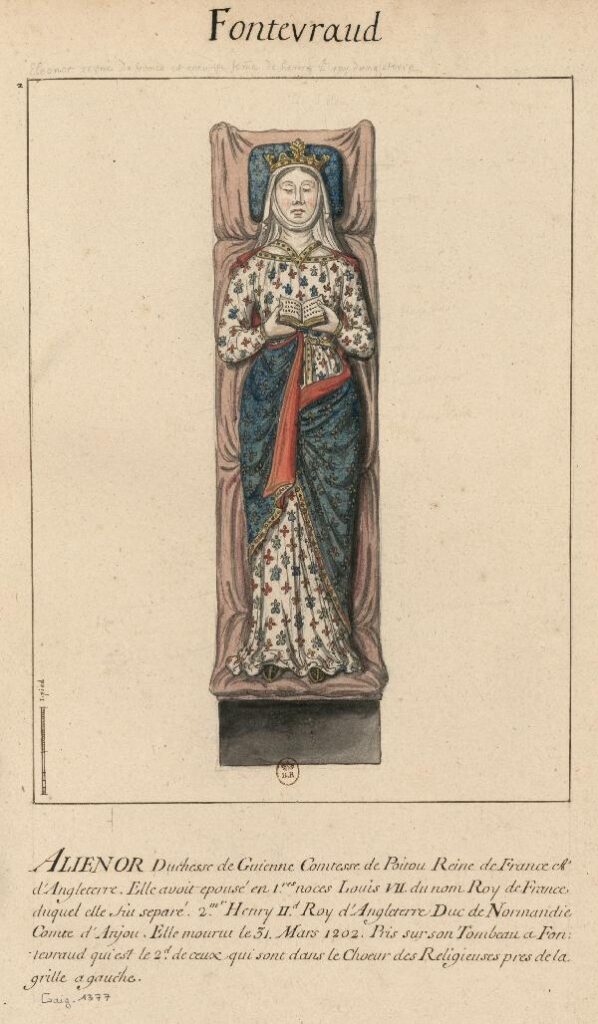
The Abbey Becomes “Royal“
After the death of her husband King Henry II of England in 1189, Eleanor of Aquitaine, Queen of France, came to the Abbey to run the affairs of the kingdom. While here, she turned the Abbey into a royal necropolis with the commissioning of four reclining effigies of the Plantagenet dynasty: one for her husband, Henry II; one for her son, Richard the Lionheart; and another for Isabelle d’Angoulême, wife of their youngest son John Lackland. The fourth was for herself, depicting her with a book in hand to symbolize her erudition.
The Impact of the French Revolution
Much like with the Abbey of Clairvaux, Napoleon decided to transform the Abbey of Fontevraud into a high-security prison during the French Revolution. The prison received its first inmates in 1814, and by the 1830s, held nearly 2,000 inmates – twice the amount it was originally conceived to house!
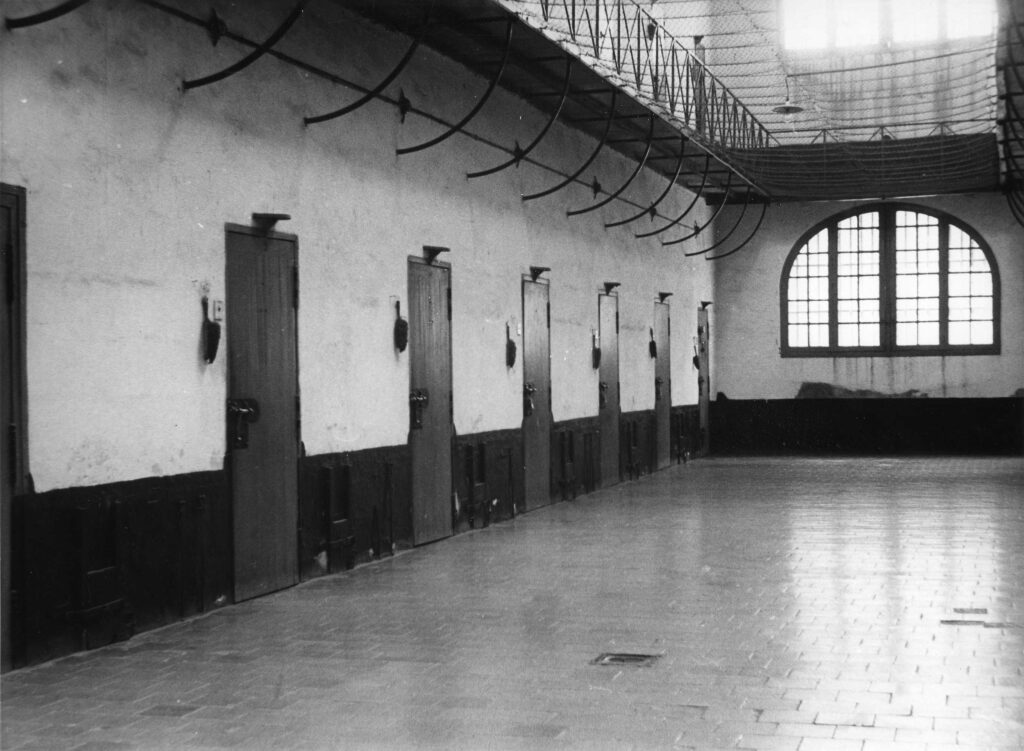
Like at the Prison of Clairvaux, the inmates were not unsusceptible to the new Constitutional Laws of 1875 that made cellular confinement compulsory, and were placed in what are known colloquially as “cages à poules” (chicken coops). These were unheated 1.5 x 2-meter (5 x 6.5 ft) cells used up until 1963 when the prison closed. Having seen these in person at Clairvaux, I can say that these are mortifying and I genuinely cannot imagine what hell the prisoners lived through.

The Abbey is Open but the Village is Closed
With the closure of the prison came the restoration of the buildings on the property, allowing the Abbey to open its doors for the very first time to the public in 1975. Unfortunately, closure of the prison also had a negative result: with over 100 guards and their families leaving, the village suffered a severe economic impact that it has never fully recovered from to this day.
If you would like to know more about life at the prison from the people who lived and worked in and around it, I suggest watching the first three videos on this playlist (they are in French without subtitles- sorry!).
Why Should You Visit?
The Abbey of Fontevraud is a unique site in the Loire Valley, encapsulating nearly one thousand years of French history that can be seen and visited to this day. From the erection of the monastic city in 1105, to its conversion into a prison in 1804, the abbey and its architecture are witnesses to the turbulent history of separation of church and state throughout France.
For instance, the Byzantine “kitchens” are a surprising element of the abbey’s architecture. Built in Charente stone in the form of an octagon with a roof speckled with pointed chimneys and fish-scale slating, this building was actually used as a smokehouse for fish. It has been under conservation so that the building can be finally accessed by the public. When we went, the conservation was in full swing and the entire thing was covered by scaffolding, so I hope when we go again that we will be able to enjoy this lovely building in full.

Another important architectural and historical element that survives today are the 16th-century wall paintings found in the chapter house. Realized between 1562 and 1567, these paintings depict scenes of the Passion of Christ, but over the years, portraits of the Abbesses of Fontevraud have been integrated into them, leaving behind a type of historical graffiti.
Although most traces of the prison are gone – unlike at Clairvaux – what was left has been carefully preserved and curated into a thoughtful display exploring this sordid period through archive images, models, period objects and testimonials, making it definitely something worth visiting.
However, if you cannot visit, I suggest taking this drone tour to see the architecture and magnitude of the abbey grounds. Other photographs of the wall paintings and other works are available on their website as well.
To learn more about how monks invented the prison sentence and how monasteries served as models for institutions of punitive confinement, take a look at this interactive and well-researched webdocumentary (in French, sorry) that uses the Abbey Prison of Clairvaux as its case study.
How English Friendly is it?
Overall, I think the Abbey is very English friendly. Tours and other information are offered in English as well as their website. The only critique I have is that the English website is not as elaborate as the French one; for instance, the page “cultural activity” is missing the agenda of events, meaning English-speaking guests may miss out on wonderful opportunities such as concerts or lectures.
Tips and Other Information
If you park at the Place du 8 Mai 1945 and follow the Allée Sainte-Catherine on your approach to the abbey, through the greenery of the trees, you will be greeted by a church (the Église Saint-Michel de Fontevraud-l’Abbaye); don’t be hesitant – take a peek on in there, it has some lovely wall paintings near the altar and around the edifice that you can admire.
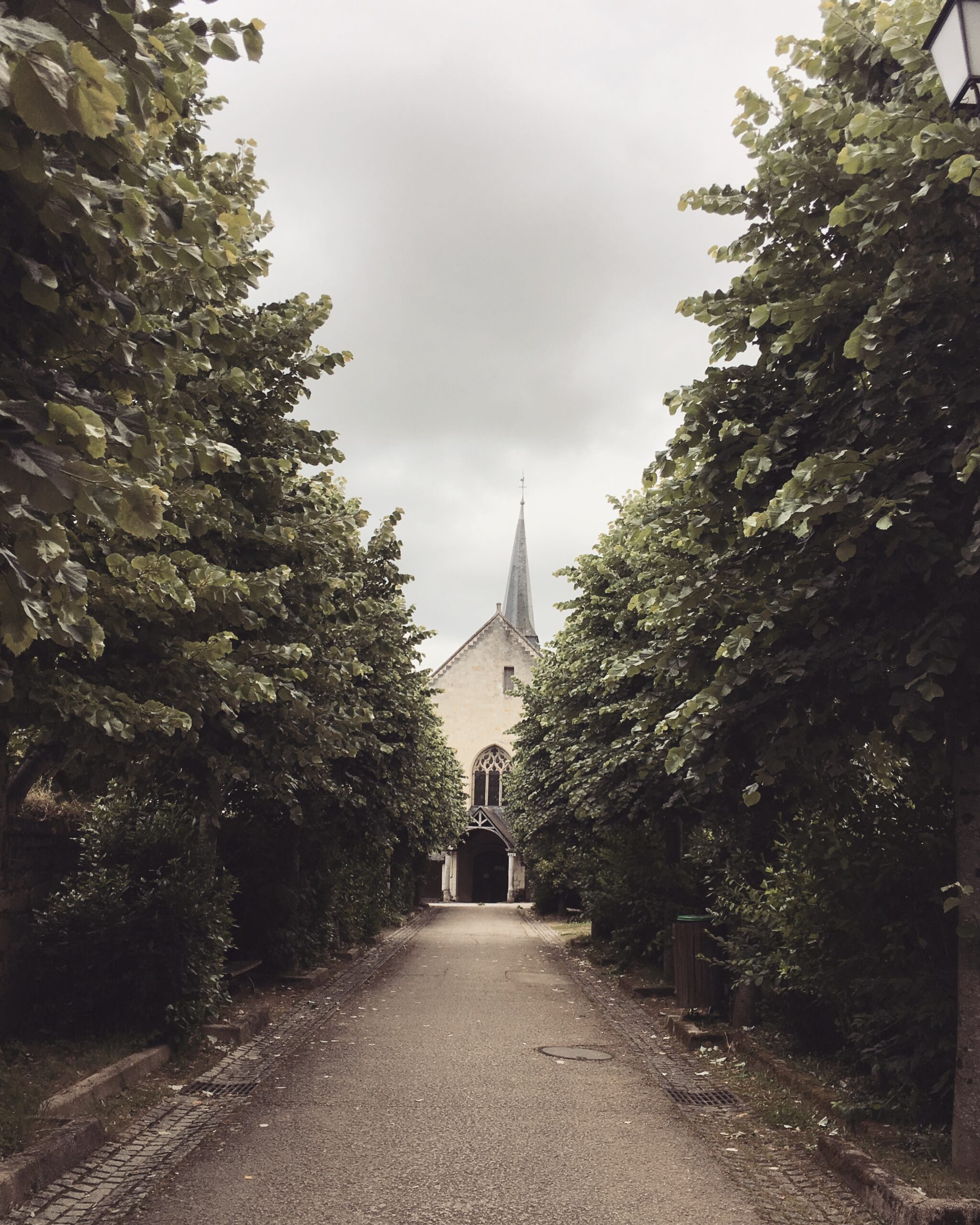
The abbey and its grounds are huge, and there is A LOT of interesting things to see, so plan to spend your day there!
Here is a link to their website, where you can buy your tickets in advance.
If you are interested in visiting an abbey where the traces of the prison have been conserved, take a look at the Abbey of Clairvaux.
Les Jardins de Villandry (The Gardens of Villandry)

As many familiar with France are aware, the Loire valley is the home to maaany famous Renaissance châteaux constructed during the reign of François I. The Château of Villandry is one of these châteaux, although, to be honest with you, I had never heard of it before! Perhaps this is because it was not constructed by a king or courtesan, but instead by Jean Le Breton, Minister of Finance to François I? I am not sure, but it’s a shame more people aren’t aware of its existence!
A Brief History of the Château and Gardens
Built in 1532 by Jean Le Breton, the château and its grounds went unchanged until its purchase in 1754 by the Marquis of Castellane. The Marquis enlarged the grounds and renovated both the interior and the exterior of the building, adding modern accoutrements of comfort and, of course, style.

Unfortunately, this “renovation” did more harm than good, but was thankfully – and thoughtfully –undone around 1906 when a couple, Dr. Joachim Carvallo and his wife, Anne Coleman, purchased the château and took to restoring the building and its grounds to their former glory. Between 1908 and 1918, Carvallo made it his mission to recreate the Renaissance gardens in compliment to the restored château, and used historical archives and other examples of period gardens to make the most accurate reconstruction possible.
Ever since, the château and its grounds have been maintained by the Carvallo family who opened it to the public in 1920.
Why Should You Visit?
Although I cannot speak for the interior of the château, I can speak about the gardens that are the crown jewel of the visit, so pick a day with good weather so you can profit off your trip.
The gardens are where its at!

Once you set foot through the entranceway, you are immediately greeted by a vast expanse of greenery, of polished refinement, and of course, symmetry. The fabulous range of garden styles able to be visited are a testament to the research and reflection Carvallo placed into their reconstitution and restoration; they are a veritable feast for the eyes and senses!
I think if you are looking for a nice day out in a colorful place that is not very crowded, the gardens of Villandry are the best choice! Plus, you can choose to solely visit the gardens like I did, or you can visit both the gardens and the château.

I just have to say that I absolutely adored this part of our trip because it was such a beautiful spring day and we had such a lovely time strolling about, pretending it was our own domain, while enjoying all of the colorful flowers and greenery. My favorite part was walking up the hill so that we could see the gardens from above.
If you cannot visit, I suggest taking a look at this lovely aerial video of the gardens and château exteriors.
How English Friendly Is It?
I have only visited the gardens, so I cannot speak for the château or any associated tours; however, their website is nearly a carbon copy from French into English, so I can assume the château experience itself would be similar in quality.
As well, they seem to have released an app available in English, French, German, Italian and Spanish which seems to act as a substitute for a tour guide.
As for the gardens, no French is necessary for their enjoyment!
Tips and Other Info
Bring your walking shoes, the gardens are huge (like Versailles!)
If you are interested, they have their own app, available for download on itunes and google play.
For more information or to book your tickets, please take a look at their website.
Enjoy your trip and let me know how it goes!
Bisous,
Rose
Read More:


